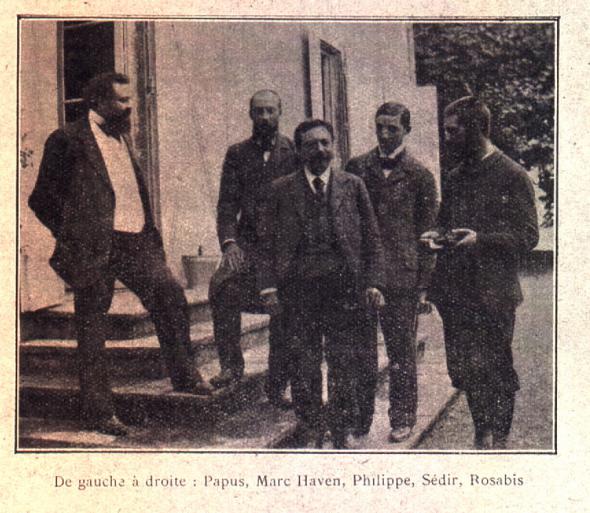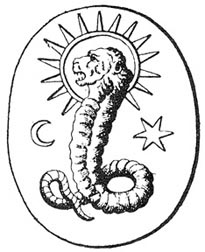|
Great Architect Of The Universe
The Great Architect of the Universe (also Grand Architect of the Universe, or Supreme Architect of the Universe), is a conception of God discussed by many Christian theologians and apologists. As a designation it is used within Freemasonry to represent the deity neutrally (in whatever form, and by whatever name each member may individually believe in). It is also a Rosicrucian conception of God, as expressed by Max Heindel. Christianity The concept of God as the Great Architect of the Universe has been used many times within Christianity. An illustration of God as the architect of the universe can be found in a Bible from the Middle Ages and the comparison of God to an architect has been used by Christian apologists and teachers. Thomas Aquinas said in the Summa: "God, Who is the first principle of all things, may be compared to things created "as the architect is to things designed" (''ut artifex ad artificiata'')." Commentators have pointed out that the assertion that the Gr ... [...More Info...] [...Related Items...] OR: [Wikipedia] [Google] [Baidu] |
God The Geometer
In monotheistic thought, God is usually viewed as the supreme being, creator, and principal object of faith. Swinburne, R.G. "God" in Honderich, Ted. (ed)''The Oxford Companion to Philosophy'', Oxford University Press, 1995. God is typically conceived as being omnipotent, omniscient, omnipresent, and omnibenevolent, as well as having an eternal and necessary existence. God is often thought to be incorporeal, evoking transcendence or immanence. Some religions describe God without reference to gender, while others use terminology that is gender-specific and . God has been conceived as either personal or impersonal. In theism, God is the creator and sustainer of the universe, while in deism, God is the creator, but not the sustainer, of the universe. In pantheism, God is the universe itself, while in panentheism, the universe is part (but not the whole) of God. Atheism is an absence of belief in any God or deity, while agnosticism is the belief that the existence of God ... [...More Info...] [...Related Items...] OR: [Wikipedia] [Google] [Baidu] |
Martinism
Martinism is a form of Christian mysticism and esoteric Christianity concerned with the fall of the first man, his state of material privation from his divine source, and the process of his return, called 'Reintegration'. As a mystical tradition, it was first transmitted through a Masonic high-degree system established around 1740 in France by Martinez de Pasqually, and later propagated in different forms by his two students Louis Claude de Saint-Martin and Jean-Baptiste Willermoz. The term ''Martinism'' applies to both this particular doctrine and the teachings of the reorganized "Martinist Order" founded in 1886 by Augustin Chaboseau and Gérard Encausse (aka Papus). It was not used at the tradition's inception in the 18th century. This confusing disambiguation has been a problem since the late 18th century, where the term ''Martinism'' was already used interchangeably between the teachings of Louis-Claude de Saint-Martin and Martinez de Pasqually, and the works of the first ... [...More Info...] [...Related Items...] OR: [Wikipedia] [Google] [Baidu] |
æon
The word aeon , also spelled eon (in American and Australian English), originally meant "life", "vital force" or "being", "generation" or "a period of time", though it tended to be translated as "age" in the sense of "ages", "forever", "timeless" or "for eternity". It is a Latin transliteration from the ancient Greek word (''ho aion''), from the archaic (''aiwon'') meaning "century". In Greek, it literally refers to the timespan of one hundred years. Its latest meaning is more or less similar to the Sanskrit word ''kalpa'' and Hebrew word '' olam''. A cognate Latin word ' or ' (cf. ) for "age" is present in words such as ''longevity'' and ''mediaeval''. Although the term aeon may be used in reference to a period of a thousand million years (especially in geology, cosmology and astronomy), its more common usage is for any long, indefinite period. Aeon can also refer to the four aeons on the geologic time scale that make up the Earth's history, the Hadean, Archean, Proterozoic ... [...More Info...] [...Related Items...] OR: [Wikipedia] [Google] [Baidu] |
Hayyi Rabbi
In Mandaeism, Hayyi Rabbi ( myz, ࡄࡉࡉࡀ ࡓࡁࡉࡀ, translit=Hiia Rbia, lit=The Great Life), 'The Great Living God', is the supreme God from which all things emanate. He is also known as 'The First Life', since during the creation of the material world, Yushamin emanated from Hayyi Rabbi as the 'Second Life'. According to Qais Al-Saadi, "the principles of the Mandaean doctrine: the belief of the only one great God, Hayyi Rabbi, to whom all absolute properties belong; He created all the worlds, formed the soul through his power, and placed it by means of angels into the human body. So He created Adam and Eve, the first man and woman." Mandaeans recognize God to be the eternal, creator of all, the one and only in domination who has no partner.Hanish, Shak (2019). The Mandaeans In Iraq. In "God is worshiped alone and praised as the Supreme Force of the universe. He presides over all the worlds and all of creation." In Mandaeism, is the belief in One God. Names Hayyi Rabbi ... [...More Info...] [...Related Items...] OR: [Wikipedia] [Google] [Baidu] |
Mandaeans
Mandaeans ( ar, المندائيون ), also known as Mandaean Sabians ( ) or simply as Sabians ( ), are an ethnoreligious group who are followers of Mandaeism. They believe that John the Baptist was the final and most important prophet. They may have been among the earliest religious groups to practice baptism, as well as among the earliest adherents of Gnosticism, a belief system of which they are the last surviving representatives today. The Mandaeans were originally native speakers of Mandaic, an Eastern Aramaic language, before they nearly all switched to Iraqi Arabic or Persian as their main language. After the invasion of Iraq by the United States and its allies in 2003, the Mandaean community of Iraq, which before the war numbered 60,000-70,000 persons, collapsed due to the rise of Islamic extremism and the absence of protection against it; with most of the community relocating to Iran, Syria and Jordan, or forming diaspora communities beyond the Middle East. Mandea ... [...More Info...] [...Related Items...] OR: [Wikipedia] [Google] [Baidu] |
Demiurge
In the Platonic, Neopythagorean, Middle Platonic, and Neoplatonic schools of philosophy, the demiurge () is an artisan-like figure responsible for fashioning and maintaining the physical universe. The Gnostics adopted the term ''demiurge''. Although a fashioner, the demiurge is not necessarily the same as the Creator figure in the monotheistic sense, because the demiurge itself and the material from which the demiurge fashions the universe are both considered consequences of something else. Depending on the system, they may be considered either uncreated and eternal or the product of some other entity. The word ''demiurge'' is an English word derived from ''demiurgus'', a Latinised form of the Greek or . It was originally a common noun meaning "craftsman" or "artisan", but gradually came to mean "producer", and eventually "creator". The philosophical usage and the proper noun derive from Plato's ''Timaeus'', written 360 BC, where the demiurge is presented as the crea ... [...More Info...] [...Related Items...] OR: [Wikipedia] [Google] [Baidu] |
Gnosticism
Gnosticism (from grc, γνωστικός, gnōstikós, , 'having knowledge') is a collection of religious ideas and systems which coalesced in the late 1st century AD among Jewish Jews ( he, יְהוּדִים, , ) or Jewish people are an ethnoreligious group and nation originating from the Israelites Israelite origins and kingdom: "The first act in the long drama of Jewish history is the age of the Israelites""The ... and early Christian sects. These various groups emphasized personal spiritual knowledge (''gnosis'') above the orthodox teachings, traditions, and authority of religious institutions. Gnostic cosmogony generally presents a distinction between a supreme, hidden God and a malevolent demiurge, lesser divinity (sometimes associated with the Yahweh of the Old Testament) who is responsible for creating the nature, material universe. Consequently, Gnostics considered material existence flawed or evil, and held the principal element of salvation to be direct ... [...More Info...] [...Related Items...] OR: [Wikipedia] [Google] [Baidu] |
Swedish Rite
The Swedish Rite is a variation or Rite of Freemasonry that is common in Scandinavian countries and to a limited extent in Germany. It is different from other branches of Freemasonry in that, rather than having the three self-contained foundation degrees and seemingly-endless side degrees and appendant bodies, it has an integrated system with ten degrees. It is also different in that, rather than moving through the offices or 'chairs', progress in the Swedish Rite is based on moving through the ten degrees. A fundamental difference is the Swedish Rite's position on religious affiliation: Anglo/American 'Regular' Masonry requires a belief in any theistic religion and Continental 'Liberal' Masonry does not require belief in any religion, whereas Swedish Masonry is specifically Christian, and requires a Christian trinitarian belief in all its members. Nonetheless, the main Swedish Rite constitutions are all recognised as regular by the United Grand Lodge of England, and stand in f ... [...More Info...] [...Related Items...] OR: [Wikipedia] [Google] [Baidu] |
Monotheism
Monotheism is the belief that there is only one deity, an all-supreme being that is universally referred to as God. Cross, F.L.; Livingstone, E.A., eds. (1974). "Monotheism". The Oxford Dictionary of the Christian Church (2 ed.). Oxford: Oxford University Press. A distinction may be made between exclusive monotheism, in which the one God is a singular existence, and both inclusive and pluriform monotheism, in which multiple gods or godly forms are recognized, but each are postulated as extensions of the same God. Monotheism is distinguished from henotheism, a religious system in which the believer worships one God without denying that others may worship different gods with equal validity, and monolatrism, the recognition of the existence of many gods but with the consistent worship of only one deity. The term ''monolatry'' was perhaps first used by Julius Wellhausen. Monotheism characterizes the traditions of Bábism, the Baháʼí Faith, Cheondoism, Christianity,Christianity's ... [...More Info...] [...Related Items...] OR: [Wikipedia] [Google] [Baidu] |
Vishnu
Vishnu ( ; , ), also known as Narayana and Hari, is one of the principal deities of Hinduism. He is the supreme being within Vaishnavism, one of the major traditions within contemporary Hinduism. Vishnu is known as "The Preserver" within the Trimurti, the triple deity of supreme divinity that includes Brahma and Shiva.Gavin Flood, An Introduction to Hinduism' (1996), p. 17. In Vaishnavism, Vishnu is the supreme being who creates, protects, and transforms the universe. In the Shaktism tradition, the Goddess, or Adi Shakti, is described as the supreme Para Brahman, yet Vishnu is revered along with Shiva and Brahma. Tridevi is stated to be the energy and creative power (Shakti) of each, with Lakshmi being the equal complementary partner of Vishnu. He is one of the five equivalent deities in Panchayatana puja of the Smarta tradition of Hinduism. According to Vaishnavism, the highest form of Ishvara is with qualities (Saguna), and have certain form, but is limitless, transcend ... [...More Info...] [...Related Items...] OR: [Wikipedia] [Google] [Baidu] |
God In Islam
God in Islam ( ar, ٱللَّٰه, Allāh, contraction of '' al- ’Ilāh'', lit. "the God") is seen as the eternal creator and sustainer of the universe, who will eventually resurrect all humans. In Islam, God is conceived as a perfect, singular, immortal, omnipotent, and omniscient god, completely infinite in all of his attributes. Islam further emphasizes that God is most-merciful."Allah." Encyclopædia Britannica. 2007. Encyclopædia Britannica According to Islamic theology, God has no physical body or gender, although he is always referred to with masculine grammatical articles, and there is nothing else like him in any way whatsoever. Therefore, Islam rejects the doctrine of the incarnation and the notion of a personal god as anthropomorphic, because it is seen as demeaning to the transcendence of God. The Quran prescribes the fundamental transcendental criterion in the following verse: "e isthe Creator of the heavens and the earth. He has made for you from yours ... [...More Info...] [...Related Items...] OR: [Wikipedia] [Google] [Baidu] |
Holy Trinity
The Christian doctrine of the Trinity (, from 'threefold') is the central dogma concerning the nature of God in most Christian churches, which defines one God existing in three coequal, coeternal, consubstantial divine persons: God the Father, God the Son (Jesus Christ) and God the Holy Spirit, three distinct persons sharing one ''homoousion'' (essence) "each is God, complete and whole." As the Fourth Lateran Council declared, it is the Father who begets, the Son who is begotten, and the Holy Spirit who proceeds. In this context, the three persons define God is, while the one essence defines God is. This expresses at once their distinction and their indissoluble unity. Thus, the entire process of creation and grace is viewed as a single shared action of the three divine persons, in which each person manifests the attributes unique to them in the Trinity, thereby proving that everything comes "from the Father," "through the Son," and "in the Holy Spirit." This doctrine ... [...More Info...] [...Related Items...] OR: [Wikipedia] [Google] [Baidu] |
_(cropped).jpg)




_(Musée_du_Caire)_(2076972086).jpg)
